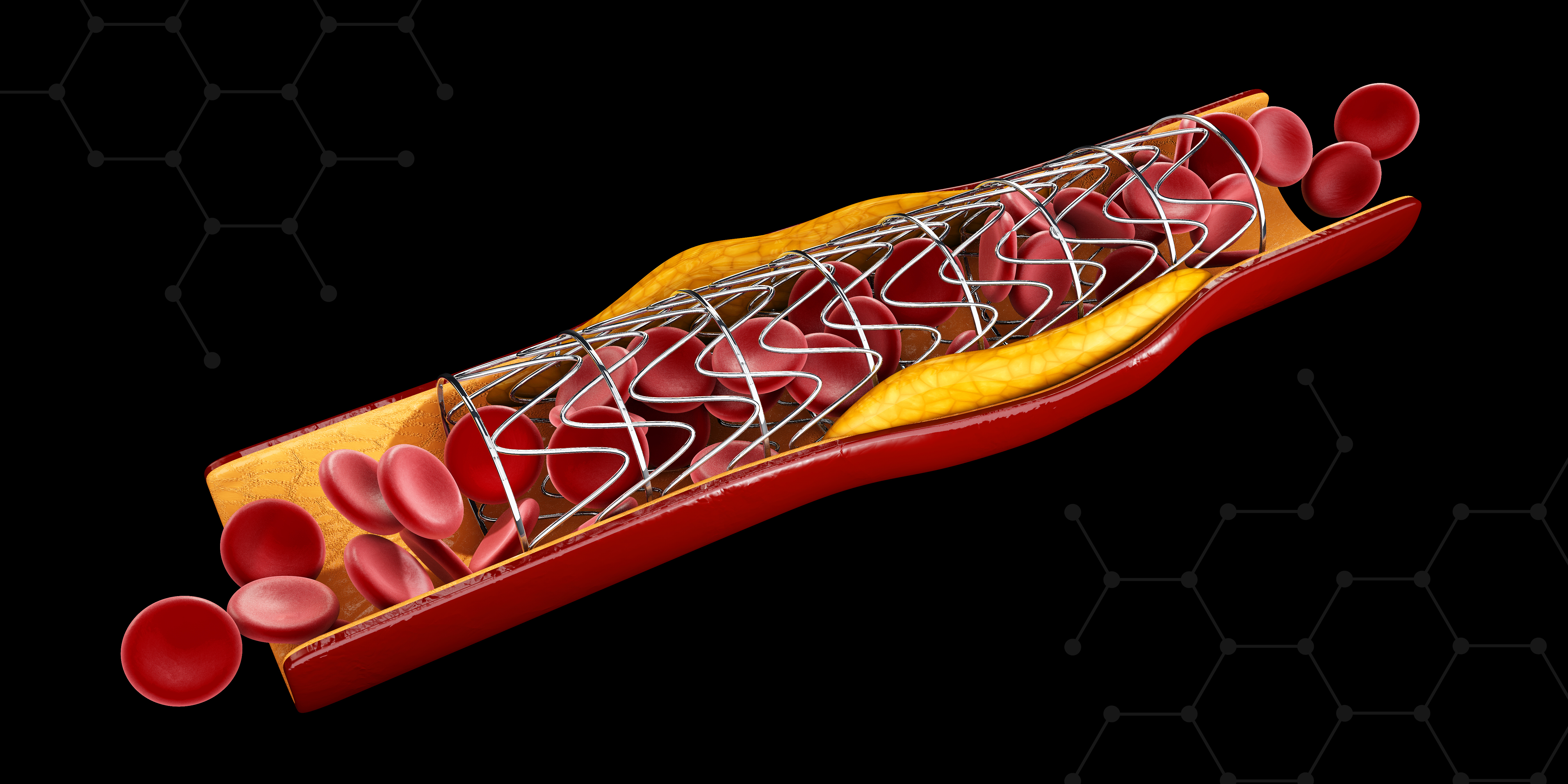In a study published in the European Heart Journal, Dr. Sergio Buccheri showed that patients with bioabsorbable polymer drug-eluting stents (BP-DES) did not have a better outcome when compared to patients who receive permanent polymers (PP-DES) during percutaneous coronary intervention (PCI).
Currently, the newer drug-eluting stents have been demonstrated to be significantly safer and more effective than bare metal stents and the older drug-eluting stents. However, there is a concern surrounding the body’s potential reaction to the presence of these permanent metallic stents. To overcome this issue, drug-eluting stents with bio-absorbable polymers were developed. Trials have previously demonstrated that BP-DES was non-inferior to PP-DES during the first year. However, whether this non-inferiority persists beyond the first year, and whether potentially severe unrecognized adverse events are associated with BP-DES is not known.

[perfectpullquote align=”full” bordertop=”false” cite=”” link=”” color=”” class=”” size=””]“The main findings of this study can be summarized, as follows: (i) in a real-life clinical scenario, the rate of stent failure with the use of newer generation DES was low at 2 years; (ii) the adjusted HR for in-stent restenosis and definite ST did not differ between BP- and PP-DES; and (iii) the adjusted risk for all-cause mortality and newer hospitalizations for MI was similar among patients receiving BP- or PP-DES at the time of the index procedure.” – Dr. Sergio Buccheri, M.D.[/perfectpullquote]
The Swedish Coronary Angiography and Angioplasty Registry (SCAAR) is a nationwide, web-based registry that collects data across all Swedish catheterization laboratories. The investigators identified all patients with who underwent PCI from October 2011 to June 2016. Depending on the type of stent used during PCI, patients were allocated to either the BP-DES or PP-DES. The primary outcome of interest was the incidence of clinically relevant restenosis and definite stent thrombosis up to two years. Clinically relevant restenosis was defined as angiographic evidence of significant (more than 50%) in-stent restenosis or functional ischemia as determined by fractional flow reserve (FFR). The occurrence of myocardial infarction and all-cause mortality was also assessed.
Out of the 95,610 stents in the registry, 57,587 were included in the analysis. The BP-DES group consisted of 16,504 stents while the PP-DES consisted of 79,106 stents. There was no evidence of imbalance in the major baseline characteristics between the two groups. Definite stent thrombosis occurred in 0.48% and 0.66% of the BP-DES and PP-DES groups by 2 years. Additionally, restenosis occurred in 1.2% of BP-DES patients and 1.4% of PP-DES patients. There was no difference in the risk of definite stent thrombosis (HR 0.79, p = 0.151) or restenosis (HR 0.95, p = 0.670) in BP as compared to PP. Finally, there was no difference in the risk of all-cause mortality or myocardial infarction between the two groups (HR 1.01, p = 0.918, and HR 1.05, p = 0.404).
This study showed that there was no significant difference in the rates of stent restenosis and stent thrombosis between BP-DES and PP-DES. Additionally, the rates of MI and death between the two groups were similar. Theoretically, BP-DES does have an advantage of PP-DES in that it reduces inflammation and hopefully, encourage the physiological endothelial process that could ultimately lead to better long-term outcomes. However, this did not translate into better outcomes in this study. When commenting on the results of the study, Dr. Buccheri wrote, “the iteration process of PP-DES leading to the current high standards of clinical performance for this technology, largely accounts for the lack of incremental benefit when BP-DES or other devices are used as comparators. Nowadays, PP-DES are characterized by enhanced biocompatibility of polymers, as well as, reduced strut thickness. These features have contributed to preserving the antirestenotic efficacy seen with the first PP-DES generation while decreasing the risk of late and very late ST.” The very low rates of stent thrombosis and restenosis further support claims that the newer generation of DES perform exceptionally well.



